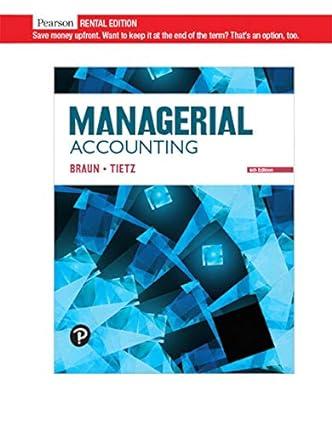Cal-Maine Foods, Inc., is the largest producer of shell eggs in the United States. In fiscal 2021,
Question:
Cal-Maine Foods, Inc., is the largest producer of shell eggs in the United States. In fiscal 2021, it sold approximately 1,073.2 million dozen shell eggs,9 which was approximately 13% of shell eggs sold domestically.10 Per U.S. Department of Agriculture (USDA) regulations, every egg carton sold in the United States must be marked with information about the eggs inside the carton, including the eggs’ grade, size, traceability code, and freshness date. The traceability code provides information about the egg farm, the region, and the specific building from which those eggs originate. This traceability information is necessary in case of healthrelated safety recalls (for example, salmonella outbreaks).
If one egg in a carton is broken or damaged, the entire carton must be discarded due to USDA regulations. The reason that the entire carton has to be thrown away rather than replacing just one egg with an unbroken one is that the eggs in the carton all must be from the same exact batch with identical traceability codes and freshness dates. The consumer would have no guarantee that the replacement egg matches the other eggs in the carton.
It is estimated that as many as one in every ten dozen eggs is broken and the carton thrown away.11 This breakage ratio (10%) means that of the 1,073.2 million dozen eggs sold by Cal-Maine Foods in 2021, over a billion individual eggs were discarded.
A Cal-Maine egg farm in Bushnell, Florida, in partnership with Walmart, two other suppliers, and the USDA, has developed a solution to significantly reduce the waste caused by egg breakage. Organic laser ink is used to mark each egg individually with its grade, size, traceability code, and freshness date. Now instead of throwing away the entire carton of eggs when a broken egg is discovered, the broken egg can be replaced with another egg that has the same grade, size, traceability code, and freshness date.
If this program is successful, Walmart alone will save over half a billion eggs from being thrown away each year. (The broken or damaged eggs will still be discarded.) Other egg sellers will have similar savings.
Requirements:
1. Think about the value chain for a carton of eggs that is sold in the grocery store.
(Start from the chicken and continue to the point of sale in the grocery store.) List as many steps in the value chain as you can imagine. At what points in the value chain does waste most likely occur?
2. In this chapter, the eight wastes of traditional operations were discussed. Which types of waste are in the value chain that you identified in Question 1?
3. Answer the following questions from the standpoint of Cal-Maine Foods, Inc., and its egg farms:
a. What costs will be incurred to individually stamp each egg?
b. What impact on revenue would the process of individually stamping each egg have?
c. What wastes in the value chain occur at Cal-Maine Foods (and its egg farms)?
4. Now answer the following questions from the standpoint of Walmart:
a. What costs might decrease as a result of purchasing eggs that are stamped individually with grade, size, traceability code, and freshness date information?
b. What costs might increase as a result of purchasing individually stamped eggs?
c. What wastes in the value chain occur at Walmart?
5. Who should bear the cost of the individual egg-stamping operations: Cal-Maine Foods, Walmart, or the consumer? Because of the tremendous amount of waste involved with the current system of discarding entire cartons, should individual egg stamping be mandated by the government? Why or why not?
Step by Step Answer:






